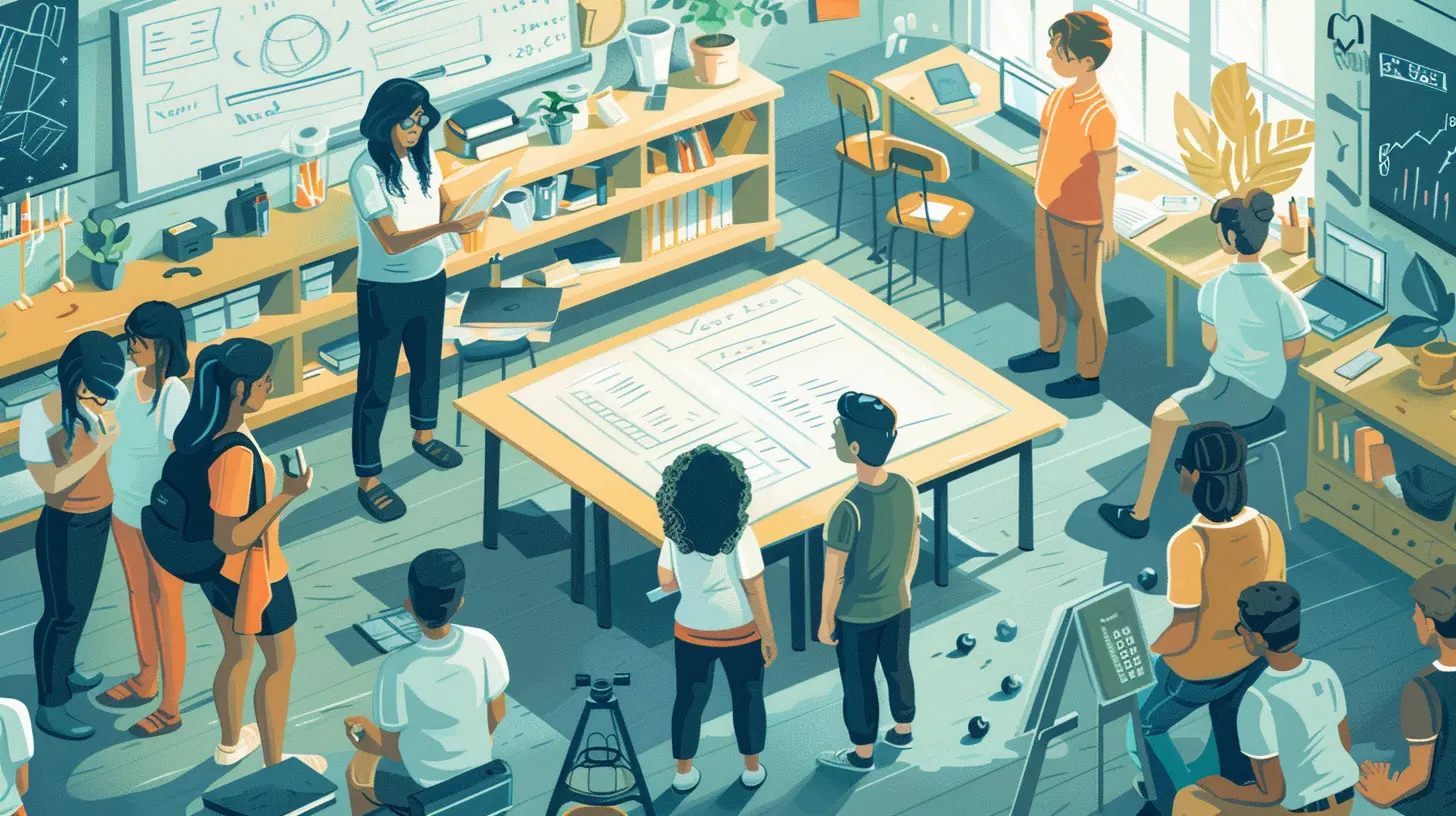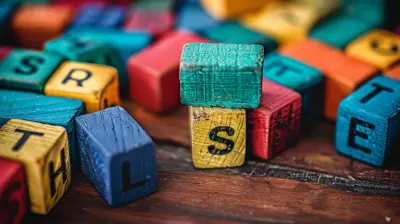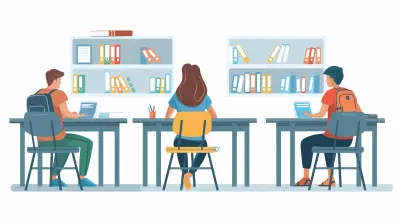8 August 2025
If you’re a teacher, parent, or student, you’ve likely heard the term “formative assessment” tossed around. It might sound like some educational buzzword, but let me tell you—it's way more than that. Formative assessments play a critical role in effective teaching. They’re like those little check-ins teachers use all the time (often without you even noticing) to see how well learning is actually happening.
In this article, we’ll break down what formative assessments really are, why they’re a game-changer in the classroom, how they differ from summative assessments, and how educators can successfully use them to improve teaching and boost student learning outcomes. And don’t worry, we’ll keep it simple, honest, and helpful.
What Exactly Are Formative Assessments?
Let’s start with the basics. Formative assessments are informal tools that teachers use during the learning process (not at the end). Think of them as temperature checks—quick ways to measure whether students are grasping the material as it’s being taught.They’re not usually graded, and the goal isn't to rank students or put them on a scoreboard. Instead, formative assessments let teachers know what's working, what’s not, and what needs to be tweaked. It's all about real-time feedback.
Still confused? Here’s an example. Say you’re teaching a class on photosynthesis. Halfway through, you ask your students to draw a diagram of the process and explain it in their own words. Their responses show you who’s getting it and who’s a little lost in the chlorophyll.
That’s formative assessment in action: quick, informal, and designed to improve both teaching and learning.
Why Formative Assessments Aren’t Just “Extra Work”
You might be thinking, “Isn’t this just more stuff for teachers to do?” Fair question. But here’s the thing—formative assessments don’t have to be complicated or time-consuming. In fact, many great teachers are already doing them without calling them that.The benefit? These assessments create a dynamic classroom. They make learning a two-way street. Instead of a teacher lecturing for an hour and hoping the lessons sink in, they’re constantly checking in and adjusting. It’s kind of like using GPS on a road trip. If you take a wrong turn, your GPS recalculates and helps you find the right path. Formative assessments do the same for teaching.
The Key Differences Between Formative and Summative Assessments
Okay, quick pit stop. Let’s clear up the confusion between formative and summative assessments.| Type of Assessment | Timing | Purpose | Examples |
|--------------------|---------------|----------------------------------|------------------------------|
| Formative | During learning | To improve learning and teaching | Quizzes, exit tickets, discussions |
| Summative | After learning | To evaluate what was learned | Final exams, standardized tests, projects |
Think of summative assessment as the final product (like baking a cake). Formative assessment, on the other hand, is all the taste tests along the way to make sure it turns out right.
How Formative Assessments Improve Teaching
Let’s dive deeper into the teacher's side of things. When teachers use formative assessments effectively, they're essentially getting insider info on how their students are doing—without needing a crystal ball.Here’s how they help:
1. Identify Learning Gaps Early
Ever taken a test and only then realized you completely misunderstood a topic? That’s what formative assessments aim to avoid. They catch misunderstandings early before they snowball into bigger problems.2. Adjust Instruction Instantly
Great teachers are flexible. If a quick quiz or class discussion reveals that students didn’t get the day’s lesson, a good teacher can pivot right away. Maybe they reteach the material, switch up the delivery, or use a different example. It’s responsive teaching at its best.3. Encourage Student Engagement
When students know their voice matters and their feedback is being used to adjust the lesson, they feel seen. That alone can increase participation and motivation. It turns the classroom from a one-man show into more of a collaborative workshop.How Formative Assessments Help Students
It’s not just teachers who benefit. Students also gain a lot from formative assessments, and here’s how:1. Build Confidence
Low-stakes check-ins let students test the waters without fear of failure. They can figure out what they know—and what they don’t—without it wrecking their grade.2. Encourage Self-Reflection
Formative assessments help students reflect on their own learning. "Wait, I thought I understood this…but maybe I need to review it again." That kind of self-awareness turns passive learners into active ones.3. Develop Better Study Habits
When students see regular feedback, they learn how to pace themselves. Instead of cramming for one big test, they're practicing and revisiting material consistently.Practical Examples of Formative Assessments in the Classroom
You might be wondering, “What do these assessments actually look like?” Good news: they come in all shapes and sizes. Here are some easy and effective examples:1. Exit Tickets
Before students leave class, they write down one thing they learned and one question they still have. Super simple, super insightful.2. Think-Pair-Share
Pose a question. Students think about it, discuss it with a partner, and then share their ideas with the class. It opens up dialogue and helps uncover misconceptions.3. Quick Quizzes or Polls
Use tools like Kahoot or Google Forms to run a short quiz. Instant data, instant feedback.4. Peer Reviews
Let students review each other’s work using a rubric. Not only does it lighten the load for teachers, but students also learn by evaluating others.5. One-Minute Papers
Students write a short reflection on what they learned and what’s still unclear. It’s quick, honest, and revealing.Technology and Formative Assessment—A Powerful Combo
In today’s tech-savvy classrooms, formative assessments are easier than ever. Platforms like Edpuzzle, Socrative, Nearpod, and even Flipgrid let teachers make learning interactive and engaging while collecting real-time data.Using digital tools, teachers can not only track learning progress but also personalize instruction. If one student needs more help, and another is ready to move on, formative assessments help teachers meet those needs individually.
Challenges With Formative Assessments (And How to Get Around Them)
Of course, it’s not all sunshine and rainbows. There are some challenges, especially when time is limited and class sizes are large. Teachers sometimes worry:- “I don’t have time for this every day.”
- “How do I know if it’s actually making a difference?”
- “Am I just adding more to my already-full plate?”
Totally valid points. But here’s how to tackle them:
- Start small: You don’t need a grand plan. Even one formative assessment per week can make a difference.
- Use student feedback: Ask them what works for them. They might surprise you.
- Keep it simple: A short journal entry or thumb-up/thumb-down survey can do wonders.
Students as Assessment Partners
Here’s an idea that might sound radical: involve students in the assessment process. Let them set goals, track their progress, and even help co-create rubrics.By doing this, you’re not just assessing—they’re learning to assess themselves. That’s a life skill that goes far beyond the classroom.
A Culture of Feedback Over Fear
Formative assessments shift the focus from grading to growth. They create a culture where feedback, not failure, drives learning. Imagine a classroom where mistakes are seen not as setbacks but as stepping stones. That’s the magic of formative assessments.Conclusion: Teaching That Grows With the Learner
At the heart of it all, formative assessments are about connection. They connect teaching with learning. They connect students with their own progress. And they connect the classroom to a mindset of growth, not just grades.They aren’t about doing more—they’re about doing better. When used thoughtfully, these assessments turn the classroom into a living, breathing ecosystem of continuous improvement. And honestly? That’s what effective teaching is all about.
So, whether you’re a seasoned educator or just starting out, don’t underestimate the power of a few simple, well-timed check-ins. They might just be the secret ingredient to unlocking deeper learning and better outcomes for everyone.








Erin Mahoney
Great insights! Formative assessments are essential for enhancing student learning and engagement. Thank you!
November 26, 2025 at 8:58 PM